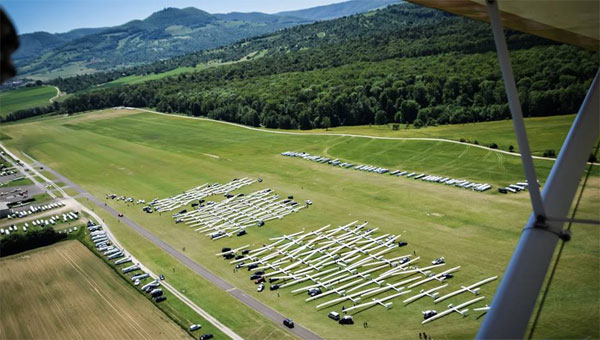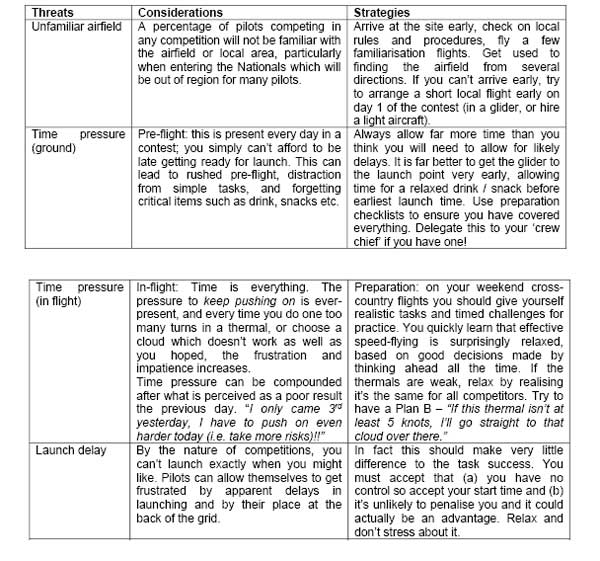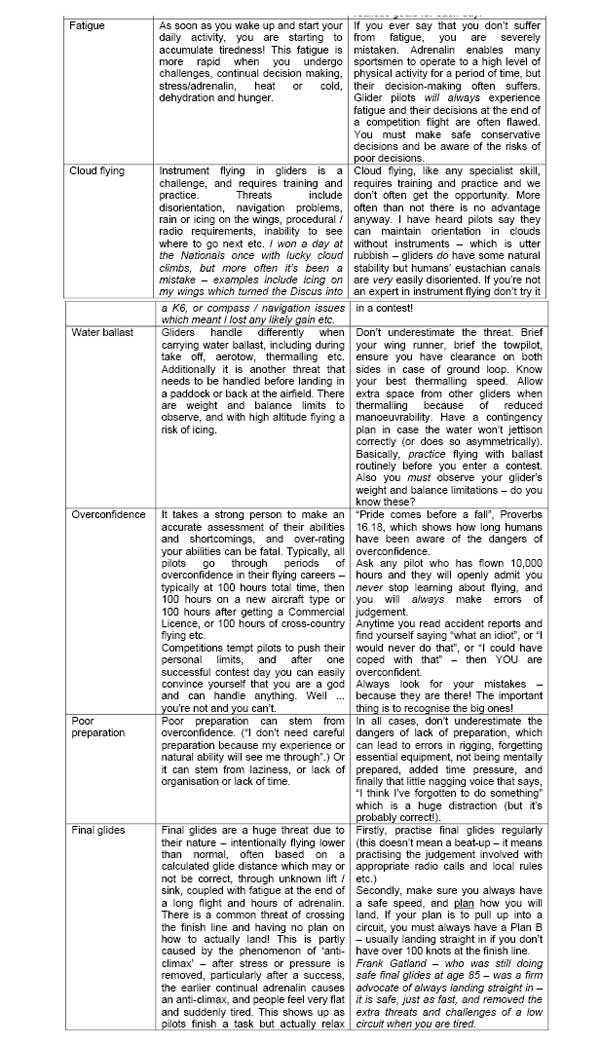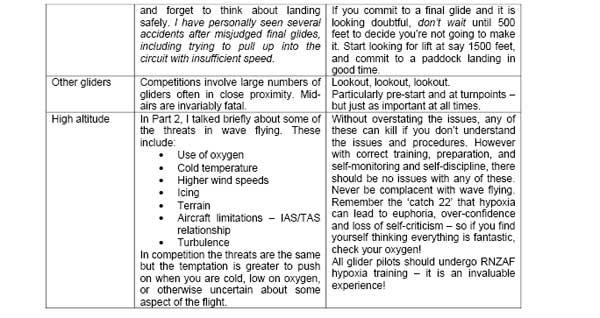In the last two articles, I introduced Threat and Error Management (TEM) as a simple yet powerful technique for assessing threats affecting any and every glider flight, and discussed how to use TEM in local and cross-country glider flights. Recognising threats allows pilots to predict situations where they might make errors or forget something, which increases the possibility of accidents.

By Arthur Gatland
This three part series of articles was first published in Soaring NZ and is reproduced here with their kind permission.
As I said in the last issue, our accident rate in NZ is poor and yet none of our spate of accidents has been the result of structural or mechanical defects – all have resulted from pilots intentionally putting themselves in a situation that for various reasons has resulted in a crash. Ridges, rocks and trees do not suddenly leap out and hit gliders – yet we manage to collide with them on a regular basis.
This series of articles apply to every glider pilot in New Zealand, regardless of experience.
In this article I will continue the theme of TEM as it applies to competition flying, which of course includes all the threats for cross-country flying, but add a few important extra threats and pressures. Remember that to assess what constitutes a threat, we use the concept of a pristine flight, and look for anything that introduces a variation to this theoretical flight. Let’s look at a pristine flight in the competition context.
PRISTINE FLIGHT (COMPETITION)
Recall from the last issue of SoaringNZ that a pristine flight relating to cross-country flying would be a ‘straightforward’ cross-country soaring flight where everything goes exactly to plan. In brief, it involves a well-prepared glider, a current and healthy pilot, and ideal soaring conditions over friendly terrain, with no time pressure. Additionally you will have chosen the task and this is likely to be based on the best conditions (predicted or observed), and you have ability to select your launch time, length of task, and the choice of shortening it if the weather deteriorates.
Of course, in competition flying there are many differences from a weekend cross-country flight, and these constitute additional threats for the competition pilot, and you need to have a strategy or plan to manage these threats. Let’s review some of these:




I could go on and on – but hopefully you have picked up the themes involved here. It’s all about recognising threats on any flight and managing them so that they do not lead to errors or significant risks. In other words, AWARENESS of the Threats and the right ATTITUDE for safe competition flying. As I said in Part 2 of this series, cross-country flying by its very nature has a significant number of threats, including a continual possibility of landout, weather changes, unpredictable lift, different terrain with changes in height above sea level, often areas of partly unlandable country, or flat but very small paddocks, use of unfamiliar hills to find ridge lift, navigation challenges, and so on. It is actually the presence of these threats that form part of the challenge, the fun and satisfaction of cross-country flying. Competition raises this to a higher level, as you test your skills against some very skilled and experienced pilots. However you must not underestimate the risks that these challenges present. Because flights are often of longer duration, dehydration and hunger are always present to some extent, and have an insidious effect on your decision-making. In the Nationals at Omarama years ago, I pushed a bit too far past the last good paddock but didn’t find lift and had to turn back to the paddock, and only just made it, ground-looping and giving myself a scare. I should have made the decision to land much earlier. I actually won the day but almost damaged the glider – but why? If I had landed in the paddock first time I would still have won and not risked injury or damage, apart from the embarrassment!
MANAGING THREATS
All these threats increase your likelihood of making an error. In this context we are not talking about errors in speed-flying, like not picking the strongest thermal, or incorrect speed-to-fly technique. We are discussing errors that result in reduced safety margins, or ultimately could contribute to an incident or accident. Most pilots can very easily recognise all threats if they think about it, but a superior pilot will implement a strategy to prevent an error resulting from any of these threats.
INSTRUCTOR RESPONSIBILITY
Once again, instructors and experienced competition pilots must help us lift our game. They should be aware that inexperienced competition pilots (and even experienced ones!) may not recognise all threats existing on any particular day. You can help these pilots by simple discussions about the task, the weather, the terrain etc. A short helpful chat to ensure they are fully prepared, have a plan and iare mentally prepared to land out if necessary, may save lives. It will actually help you to think about the threats and focus your own mind on safety.
As I said previously, the main ways that new pilots can gain experience and knowledge is by instructors or experienced pilots passing on these thoughts, OR letting them learn by making mistakes! Which method is better??!!
CONSEQUENCES OF ERRORS
When competition flying, the most common and most serious safety-related errors – that of late paddock selection and speed maintenance when ridge flying – have consistently proven to have serious implications including major damage, injury or death. Yet collectively we persist in committing these errors. To be blunt – why are we that dumb? I don’t know ... but I suspect it’s gross over-confidence, or ignorance, or denial – “it’ll never happen to me.”
All I can say is that if this applies to you, then YOU need to wake up and realise how illogical your attitude is. Just ask your wife/husband what they think about your attitude to survival...
SUMMARY FOR ALL GLIDER FLYING
Every glider flight, whether local, cross-country or competition, involves some threats, and all pilots must ensure they recognise these and have a strategy to manage the threats and prevent errors, and/or have a process to catch errors or slips that may have occurred. Remember we ALL make some mistakes on every flight – the important thing is to ensure they are not critical ones, or that they are captured before they lead to an undesirable position.
USEFUL STRATEGIES
A reminder that the following are just a few examples of TEM strategies that should become automatic to be a skilled and safe pilot.































